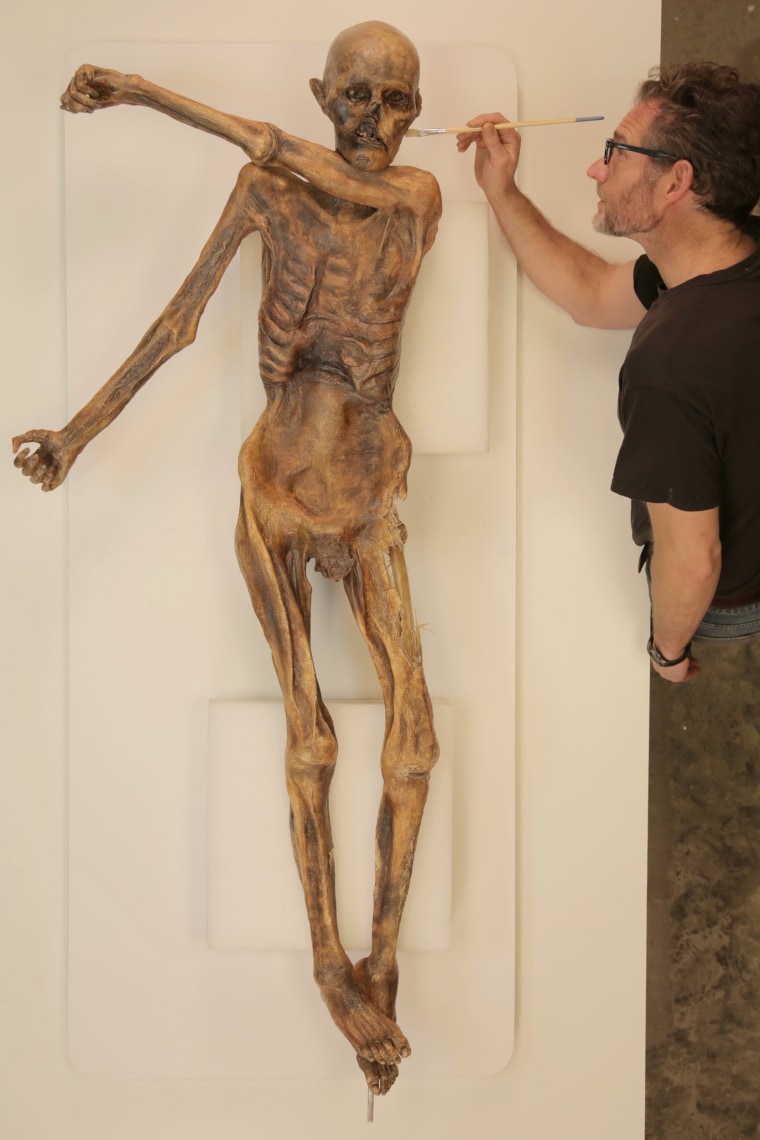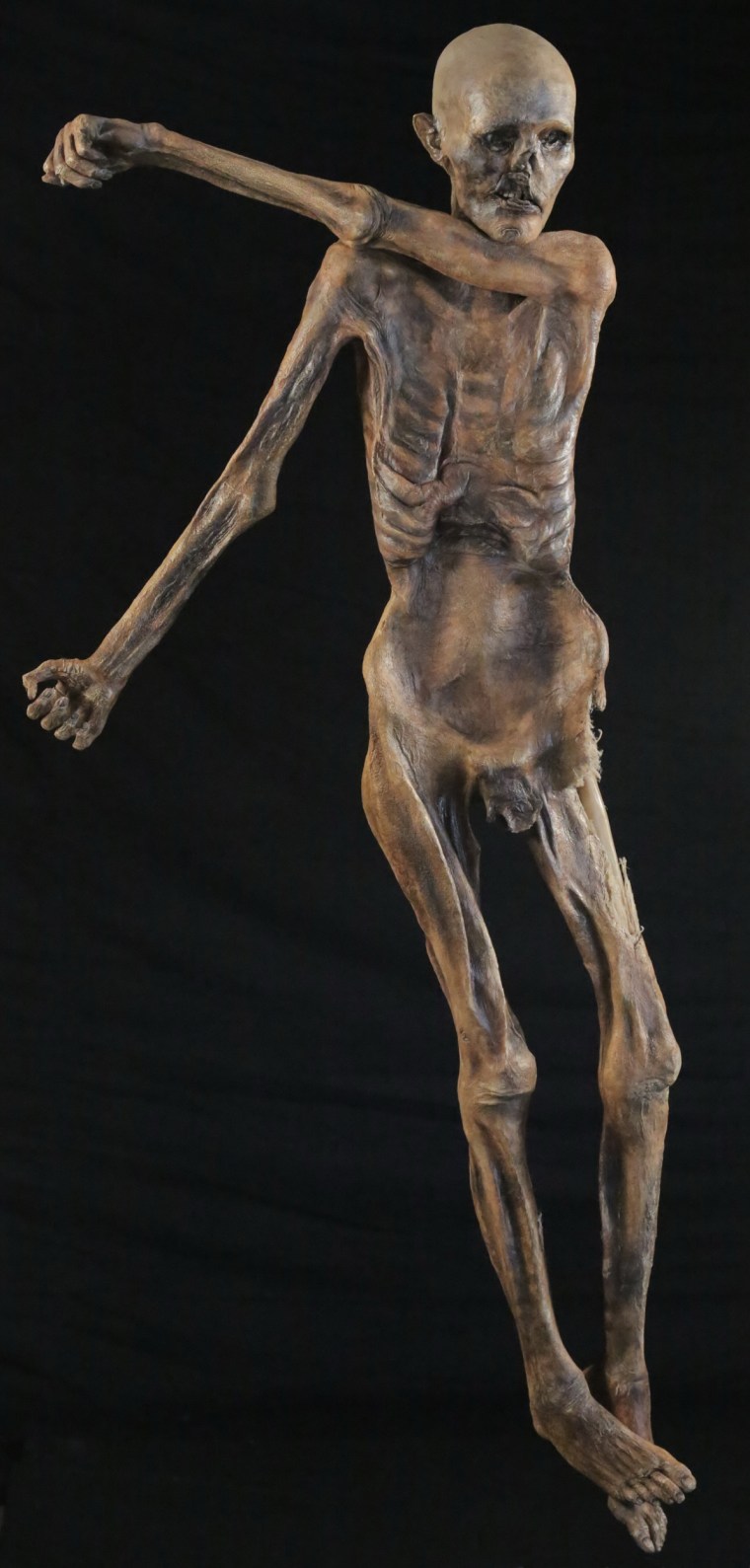MAINZ, Germany — Some 5,000 years after his violent death, one of the world's best-known mummified bodies has been replicated by an American artist using 3-D printing technology.
"Ötzi the Iceman" became a media sensation in 1991 after he was discovered by a pair of German hikers high in the Italian mountains.
Named after the Ötztal Alps in which he was discovered, Ötzi likely bled to death after he was shot in the shoulder with an arrow more than five millennia ago.

Most of us can only view the body in darkened room at Italy’s South Tyrol Museum of Archaeology — a necessary measure to protect Ötzi's uniquely preserved body.
But thanks to the efforts of Missouri-based artist Gary Staab, who specializes in making replicas of archaeological finds, three models of the Iceman have now been created and will be used for scientific lectures in the U.S.
"It was probably the most difficult project I ever worked on," the 48-year old told NBC News.
Staab spent more than 2,000 hours on the project and has previously sculptured replicas of mummies from Peru and Egypt, as well as the ash figures from Pompeii.
He has also worked on recreating dinosaurs.
After examining the original Ötzi in Bolzano, Italy, last summer, he used CT scans to create a medical-grade 3D-printed model using liquid resin.
The stereolithography was done in a giant 3-D printer at Belgium-based company Materialise. However, the scans were not able to capture all of the body parts, such as the hands and ribs, so the model was completed with paint and clay.
"Staab succeeded in carving out fine detail," said Angelika Fleckinger, director of the South Tyrol Museum of Archaeology. "The result of his work is therefore confusingly similar to the original."
One of the models will be included in a traveling exhibition due to start in October 2017 at the North Carolina Museum of Natural Science, in Raleigh. The other two will be used for teaching purposes in New York's Cold Spring Harbor DNA Learning Center.
Staab said he hopes "to please the scientists" with his creations.

